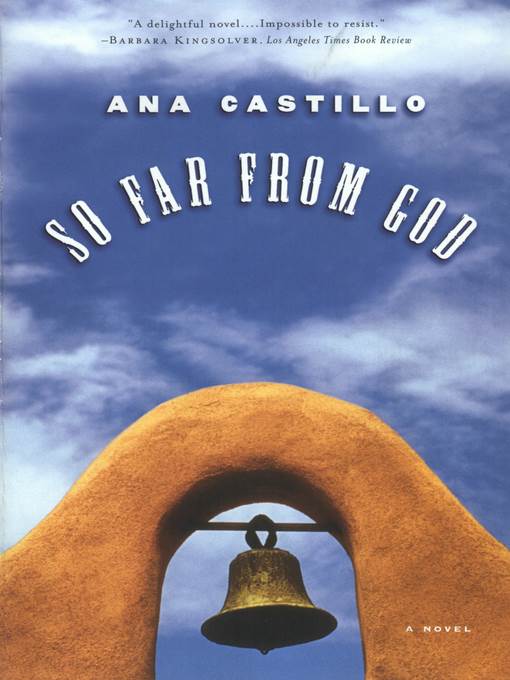
So Far from God
A Novel
کتاب های مرتبط
- اطلاعات
- نقد و بررسی
- دیدگاه کاربران
نقد و بررسی

May 3, 1993
Castillo's ( Sapogonia ) inventive but not entirely cohesive novel about the fortunes of a contemporary Chicana family in the village of Tome, N.M., reveals its main concerns at once. Sofi's three-year-old daughter dies in a horrifying epileptic fit but is resurrected (and even levitates) at her own funeral, reporting firsthand acquaintance with hell, purgatory and heaven. Magic and divine intervention in varying ways touch each of Sofi's three other daughters: the eldest, mainstreamed yuppie Esperanza; Caridad, whose path leads toward folk mysticism; and the more mundane Fe, who--seized with a screaming convulsion when her fiance jilts her--is brought to silence only months later through the intercession of the resurrected youngest sister, ``Loca.'' Castillo takes a page from the magical realist school of Latin American fiction, but one senses the North American component of this Chicana voice: in her work, occult phenomena are literal, not symbolic; life is traumatic and brutal--as are men--but death is merely tentative. She sounds a secondary note as a proponent of feminism and social justice, but her hand falters when she attempts to blend the formation of an artisans' cooperative or an industrial toxins scandal into a universe of magical healings and manifestations. Castillo is also a critic, a translator and a poet.

July 1, 1993
This masterfully written novel by the author of The Mixquiahuala Letters (Anchor: Doubleday, 1992) tells the story of Sofia and her four daughters. The Hispanic family lives in Tome, New Mexico, a small, quiet town whose inhabitants nonetheless directly deal with such current social issues as AIDS, industrial pollution, the volatile political situation in the Middle East, poor people's struggle for self - sufficiency, and the current interest in alternate spirituality and natural medicine. Although filled with tragic events, the narrative also offers hope in its portrayal of successful journeys toward wholeness by each of the five women. Each chapter stands on its own as a complete story, but readers won't be satisfied until they've finished the entire skillfully constructed book. Highly recommended for collections with demand for Hispanic, women's, or spiritual literature.-- Sherri Cutler, Children's Memorial Hosp. Lib ., Chicago
Copyright 1993 Library Journal, LLC Used with permission.

April 1, 1993
This is a riotous and rascally novel infused with mysterious forces both malevolent and divine. Tome, New Mexico, a tiny desert community, has long been home to Indians, Chicanos, and Anglos, but its ancient cultural and spiritual resiliency can barely contain the bizarre events that rock the household of Sofi and her four unusual daughters. The youngest dies abruptly of convulsions, but is resurrected at her funeral and endowed with clairvoyant powers. Fe goes stark raving mad when her wedding plans fall through. Caridad is brutally attacked and mutilated by some monstrous manifestation of evil, but experiences a miraculous recovery and apprentices herself to a "curandera." And Esperanza, a TV news anchorwoman, visits her family as a ghost after getting killed covering the Persian Gulf War. All of this and more is reported by a fast-talking, earthy, feminist, opinionated, and irresistible narrator. Castillo is simply dazzling, tossing off miracles, scathing social commentary, and smart-ass humor as easily and naturally as shaking water from a mane of wet hair. Her novel "The Mixquiahuala Letters" (1987) won an American Book Award; her newest is sure to generate excitement. ((Reviewed Apr. 1, 1993))(Reprinted with permission of Booklist, copyright 1993, American Library Association.)

























دیدگاه کاربران